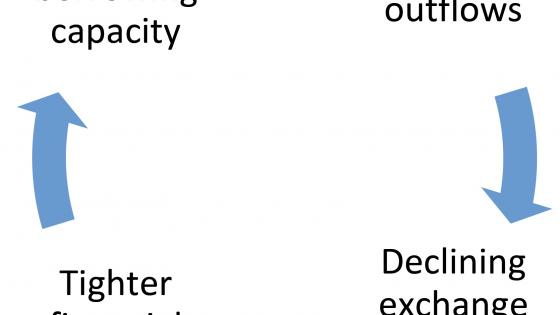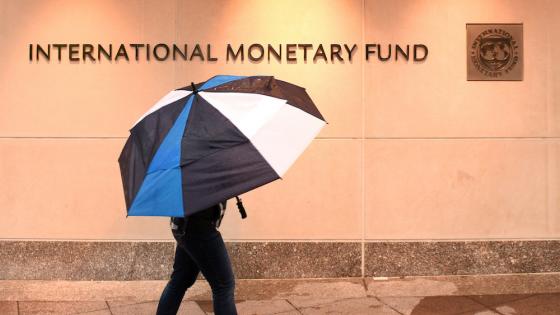Whatever its merits for rescuing European nations mired in crisis, the German finance minister’s 7 March proposal for a European Monetary Fund provides an opportunity for Europe and the US to get the future of the IMF right.
The crisis was a good thing for the IMF. Only a few years ago, the Bretton Woods institution was fading into obscurity, but by the late 2009, the Fund had sprung back to life, committing over $160 billion in new emergency loans to nations such as Hungary, Iceland, Pakistan, and Ukraine. Following the US Treasury’s suggestion, the G20 pledged to triple the Fund’s lending capacity to $750 billion, and it was asked to manage the wide-ranging Pittsburgh balanced-growth agenda.
Post-crisis challenges for the IMF
Despite its new windfall and increased responsibility, the Fund remains under severe pressure over its legitimacy and effectiveness (Spaventa 2009, Williamson 2009 and Wyplosz 2009). And the spectre of disintegration of the global financial architecture is roaming around – right at the time when strong system-wide management is most needed.
The epicentre of this issue is Asia. Regional nations scarred by the Fund’s tough policy conditionality for loans during the 1997-98 regional financial crisis are wary of the Fund and are moving back to the strategy of building up national reserves and regional financial arrangements so as to wean themselves off the institution’s influence.
The Chiang-Mai initiative conceived in 2000 created a network of bilateral swap arrangements in Asia among the ten ASEAN members and China, Japan and Korea (or ASEAN+3). The arrangement was paralleled by the Asian Bond Markets Initiative and paved the way for discussions on a regional IMF, an Asian Monetary Fund.
Contributing to the regional drive is Asia’s perceived lack of influence in the Fund. Many emerging markets see the IMF’s governance structures as unfairly favouring some Western European members (Williamson 2009). The US-sponsored pledge to expand emerging markets’ voting share by five percentage points to 48% of the total by 2011 at the September 2009 G20 meeting received a hesitant reception in Europe. But it is a politically feasible way to address some of the grudges of those emerging nations that do have fewer votes than their economic weight would suggest, including China and India (Hufbauer and Suominen 2010).1
The urgency to foster Chiang-Mai accentuated as the Great Crisis breezed through. The arrangement was expanded to a total of $120 billion, and it was “multilateralised” – made a regional pool for realising the very same scale economies that the Fund promotes at the global level. The main powers, Japan and China, agreed on equal voting shares. Perhaps following this example, Latin Americans have also started discussing regional financial response mechanisms.
Thus far, Chiang-Mai has had a link to the IMF; borrowers can draw up to 20% of their bilateral or multilateral swaps, but then need to agree on an IMF programme, including prescribed policy adjustments, to access the remaining 80%. As such, Chiang-Mai is much more tightly referenced to the Fund than European and US regional rescue schemes ever were.
But given US and European powers in the Fund, their schemes already had a built-in consistency with the IMF. Asian countries, with less weight at the Fund, do not necessarily agree on the body’s policies and are more eager to go at it alone. A gradual divorce between the Asian schemes and the IMF would risk conflicts and gaps between regional and IMF responses in the face of crises, an outcome that would be bad news for global financial stability.
Regionalising the IMF is sub-optimal
More generally, completely regionalising the management of global financial stability would be sub-optimal. The IMF’s inherently global projection provides three benefits that cannot be replicated by regional schemes.
First, for any nation believing in the benefits of sound macroeconomic management both at home and abroad, the Fund provides global policy leverage – something a regional fund delinked from the IMF would not give to the outsiders. The Fund’s policy conditionality, while not perfect, has made a substantial difference. For instance, studies show that Fund programmes, when implemented, improve the recipient’s current account and international reserves (Ul Haque and Khan 1998). Moreover, contrary to what its critics say, the Fund’s impact on preventing currency crises and reducing macroeconomic imbalances is also positive (Dreher and Walter 2010).
Granted, the Fund has made mistakes – and it certainly is no magic wand for misgoverned economies or nations that fail to complete its programmes (Dreher 2006). But many an emerging market country might well be a declining market country were it not for the IMF’s lending and policy advice. Regional or bilateral rescues not predicated on similar demands for good governance would perpetuate moral hazard and, at worst, undercut the IMF’s policy advice.
Second, the Fund’s surveillance and research on the global economy is something regional funds would not and could not replicate. Yet, that crises all too easily globalise requires system-wide monitoring and policy recommendations. The Fund is the only institution in the world to credibly serve as a systemic police patrol and alarm bell.
Third, the Fund economises bailouts. Pooling insurance multilaterally makes for smarter policy than hoarding reserves unilaterally or structuring rescues bilaterally, or, given that crises span continents, rescuing only regionally. That the Fund distributes the burdens of emergency insurance across its 186 members also prevents free-riding on the main lenders. For instance, US contributions to the Fund are matched more than four-fold by other states (Henning 2009). While regional funds can be an excellent complement to the IMF, managing global surveillance or rescues by relying on them alone would be inefficient and risky.
Regional schemes are still some way off
Concerns that the world will split into regional schemes might be premature. While Asian countries may have a sufficient kitty for their own monetary fund or a larger Chiang-Mai, in practice they are not ready for a separation from the Fund even if the arguments were compelling.
First, Asia is still much more integrated with the US and European financial markets than intra-regionally (Eichengreen and Yung 2005). The region’s global exposure calls for multilateral engagement.
Second, the regional pool, unless augmented, is still small and untested. After being hard-hit by the crisis, Korea and Singapore turned directly to Japan and China, and Korea performed its largest, $30 million swap arrangement not with Asia, but with the US Federal Reserve.
Third, politics stand in the way. Beijing has grown increasingly enthused about the Asian Monetary Funf and made the case for an Asian Currency Unit, but Japan has a large stake in the IMF and wants to continue playing the role of a leading power in Asia. Even if Tokyo and Beijing collaborated seamlessly, political divisions not unlike those at the IMF could erupt between the Sino-Japanese-dominated financial schemes and other nations in the region.
In light of their disenchantment with the IMF and the uncertainties surrounding the regional pool, the first-best strategy for Asian nations for now is unilateral reserve accumulation – even if it de-economised the provision of insurance that the IMF is designed to economise – and to unnecessarily divert funds away from regional investments in, say, education or infrastructure.
An opportunity for the IMF
The debate over a European Monetary Fund will – if discussions continue – have implications on the dynamics in Asia. Just as with European integration and the euro, it will likely inspire Asian countries. But discussion of a European fund also present an opportunity for Europe, along with Washington, to set a precedent for a constructive complementary relationship between regional funds and the IMF – one that can be referenced and leveraged in Asia. This idea should come before any European urges to completely distance any European Monetary Fund from the IMF. A Chiang-Mai-type link should be viewed as being in the broader interest of Europe in the world economy.
Even if the EMF idea does not prosper, the idea of regional initiatives is unlikely to disappear completely. The issue requires careful consideration. Three steps could be taken.
First, working particularly with Japan, China, and Korea, the US and Europeans should in the G20 context fashion a clear set of principles to guide the relationship between the IMF, regional financial facilities, and bilateral arrangements. Money confers influence, but, as President Roosevelt understood in the 1940s, influence can be exercised in a fashion constructive to long-term viability of the global economy. Emerging nations, many with money, will now need to be tied into this paradigm.
Second, US and European support to Asian financial integration should be conditioned on a continued 20% link to the IMF. A range of further, non-zero-sum mechanisms can be deployed to foster synergies between Asian schemes and the IMF. One idea is that Chiang-Mai members gain voting shares in proportion to their Chiang-Mai contributions for IMF decisions concerning the region (Lipscy 2009).
Third, giving emerging Asia and especially China more power in the Fund is unlikely to – and should not – undo plans for a regional fund. But it could provide Asian countries with greater incentives to hone the multilateral financial system and build complementarities between the Fund and their regional arrangements. The ball is now on Europe’s court. A key step is to agree on the 5% share increase for emerging markets, not because it is necessarily the best or the only solution, but because it has already been agreed upon.
References
Dreher, Axel and Stefanie Walter (2010), “Does the IMF Help or Hurt? The Effect of IMF Programs on the Likelihood and Outcome of Currency Crises”, World Development, 38(1): 1-18.
Dreher, Axel (2006), “IMF and Economic Growth: The Effects of Programs, Loans, and Compliance with Conditionality”, World Development, 34( 5):769-788.
Eichengreen, Barry and C. P. Yung, (2005), “Financial Liberalization and Capital Market Integration in East Asia,” The EU Centre of the University of California, Berkeley and the Ford Foundation.
Henning, Randall C, (2009), “US Interests and the International Monetary Fund.” Peterson Institute Policy Brief 09-12.
Hufbauer, Gary and Kati Suominen (forthcoming 2010), Globalisation at Risk: Challenges to Finance and Trade, New Haven: Yale University Press.
Lipscy, Phillip Y (2009), “Asian Regional Cooperation and Global Reform after the Financial Crisis”, CSIS Policy Brief 8 (October).
Ul Haque, Nadeem, Khan, Mohsin S (1998), “Do IMF-Supported Programs Work? A Survey of the Cross-Country Empirical Evidence”, IMF Working Paper 169.
Spaventa, Luigi (2009), “Reforms of the world financial system: Can the G20 deliver?”, VoxEU.org, 28 January.
Truman, Edwin M (2009), “The G20 and international financial institution reform: Unfinished IMF reform,” VoxEU.org, 28 January.
Williamson, John (2009), “Reforming the IMF”, VoxEU.org, 14 February.
Wyplosz, Charles (2009), “Can the G20 reform the international economic system?”, VoxEU.org, 28 January.
1 China and India hold 4 and 2% of the Fund’s voting power, while generating, right before the financial crisis, more than 8% of the world’s GDP at market exchange rates, and almost 18% at purchasing power parity exchange rates. The issue is not, however, one that pits emerging markets against advanced nations, as it is often painted to be. For example, some Eastern European nations and the US, with 17% of the voting power, are also underrepresented, while Saudi Arabia is over-represented. Under the Fund’s quota formula, factors other than GDP also affect voting power. The quota is a weighted average of GDP (weight of 50%), openness (30%), economic variability (15%), and international reserves (5%).


